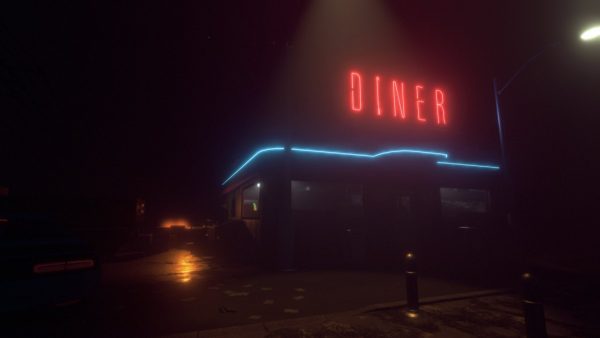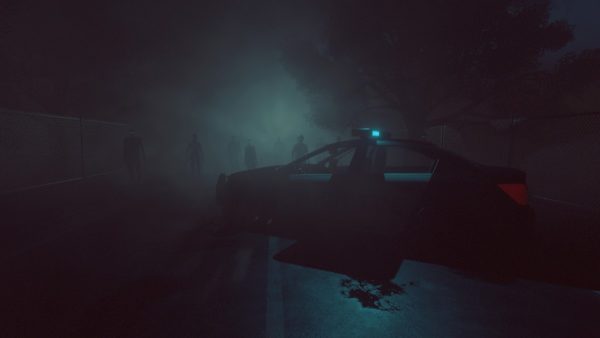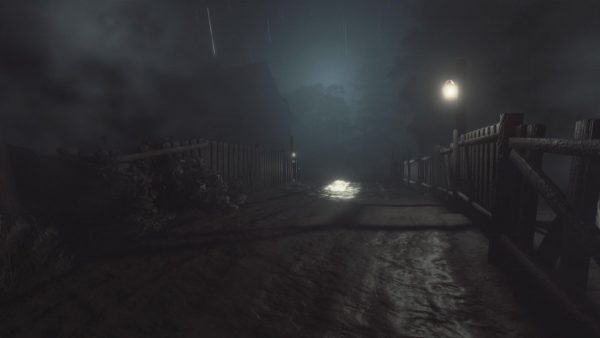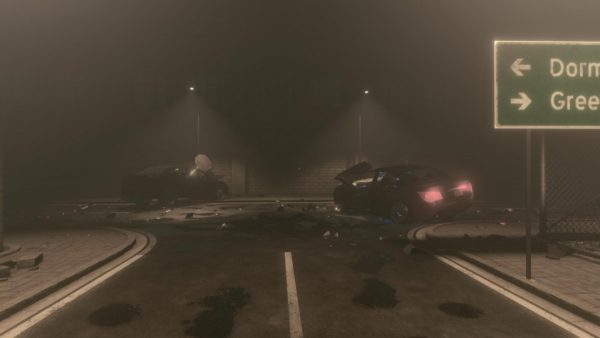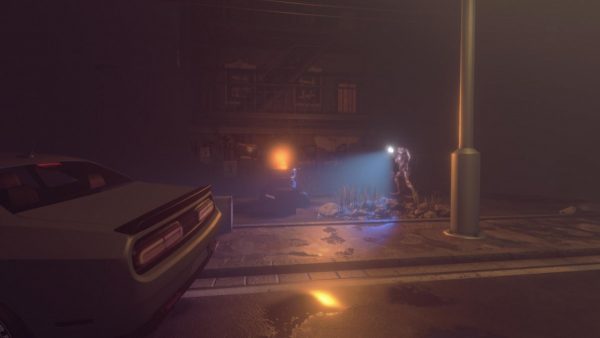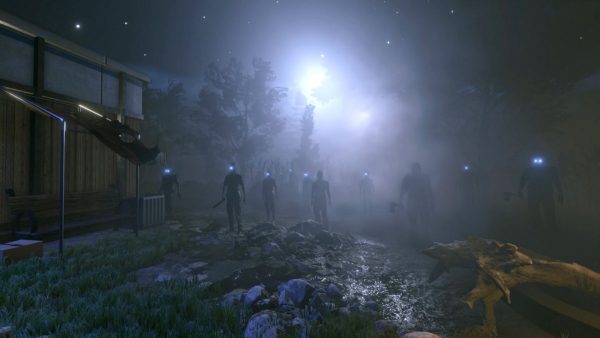Red Stewart chats with developer Camel 101 about Those Who Remain…
Those Who Remain is an upcoming survival horror title developed by Camel 101, an independent game company that previously created several games like Gemini Wars and Syndrome. With the game set to come out soon, Flickering Myth had the chance to speak with them, and I in turn had the honor to conduct it:
Thank you folks for taking the time to speak with me! I don’t get to interview game developers often, so this is an honor. One thing I have noticed about the horror genre is that it rests on two seemingly-contradictory goals: making players afraid of the unknown, yet also giving them a mystery to uncover. I say they contradict because, though both are built on limiting the player’s knowledge of events, they open up different avenues in terms of their trajectory: with fear, you are being driven away from the truth, while with a mystery you are being driven towards it.
As developers, how did you go about tackling this issue and creating a balance in the story?
Great question! Horror usually deals with a lot of unknowns. In movies for example, it can be an alien, a ghost, a haunted house – a creature or a place that has a unique set of features or rules that the protagonist and the viewer doesn’t know about. As the protagonist learns more about his opponent, he becomes less vulnerable. And the viewer becomes less afraid. So you can say that the unknown is really directly tied to the fear factor.
We obviously have mysteries in Those Who Remain too. There are several storylines at play in the game, each with their own mysteries: Edward, the main character: when the game starts, he’s drinking, looking at pictures and holding a gun. He’s in a very dark place, very depressed. The player doesn’t know why, but he’ll find out.
Dormont, the town where the action takes place. People are disappearing, there are strange creatures in the dark, weird portals appearing out of nowhere – there’s a lot going on. Rules that the player needs to understand to plan his moves.
As the game progresses, the player will slowly find out what happened with Edward and with that town. And the fear factor slowly starts to decrease. That’s when we introduce new rules. New creatures, with different behaviors. The player has to relearn again. We try to achieve a balance by throwing more unknowns at the player, as he progresses throughout the adventure.
We also decided early on that we wanted the storyline to be a bit ambiguous. Different people might get a different message from the conclusion of the narrative.
It think it also adds to the mystery when there’s not a direct answer to whatever’s going on.
Based on what I have read, and the demos I have seen, it appears that there is no combat system in “Those Who Remain,” the only means of defense instead being the creation of light sources. While these kinds of horror/psychological thriller titles are very popular (the success of “Outlast”, “Amnesia”, and others proves so), I personally haven’t been the biggest fan because they turn the core game into a ‘running simulator’ wherein your character’s only option is to dart away from every threat.
It is true that the primary appeal of horror games is the feelings of tension garnered from facing an entity that significantly outmatches you, but the purpose behind that design, from my perspective, has always been to emphasize the use of strategy over going in guns-ablazing (ex. conserving your ammunition in the original Resident Evils, utilizing the fog in Silent Hill 2), whereas in this subset, it’s more like players are being limited just for the sake of it.
I suppose what I’m asking is, what advantages do you see to this game design that you’re employing? What does it add to the horror genre that a skeptic like me is not seeing?
Our previous game (editor’s note- Syndrome) was also in the horror genre, but it was much more action oriented. There were weapons, combat, ammunition and so on. After finishing that game, we wanted to try something different, explore new game design ideas, puzzles and mechanics. But we also didn’t want to do a “walking simulator”. I like walking simulators, but I understand that they can be less exciting to folks that like more action.
So, we put our heads thinking about how we could do something different. It all started with a simple concept: the player wouldn’t be able to go into the dark. If he did, he would die. Supernatural reasons. We thought about making puzzles, where the player had to manipulate light sources to clear paths through the dark.
Sounded awesome on paper, but didn’t quite work out when we built a prototype. The reason was that light gets gradually dark. There’s not a clear outline or frontier that’s obvious to the player where safety ends and danger starts.
That’s when we had the idea of placing creatures in the dark. It wouldn’t be darkness itself that would kill, but what roamed in the dark. This actually grew really well into the story, that was being written at the same time.
And so, we had the basic premise of the game. The player’s actions weren’t limited to exploring and reading journals. He had to plan and think about how he could bring light to specific areas. This was cool but we weren’t happy yet. And so we created an alternate reality that the player would have to visit frequently. This reality is almost like an ugly mirrored version of our world, meaning that what happens in one reality, affects the other.
These two combined mechanics allow us to create interesting puzzles that the player needs to solve. He’s not just grabbing keys and opening doors. He needs to manipulate objects and think about how an action in one reality might help him in the other.
It’ll hopefully bring something unique to the genre. A more puzzlier approach, you could say.
Based on the demos I saw, I can say that the sound design is absolutely incredible. Choreographing a cue (whether a music or SFX one) to line up with a story beat isn’t the easiest thing to pull off, but it felt very natural in “Those Who Remain”. What was the thought process behind when you wanted to have pure SFX in the background versus playing a track from the score?
That was a very early decision. We feel that music works really well in action horror games, but not in this particular kind of gameplay. The goal here is for the player to be completely immersed. We don’t want the music to cue that something’s about to happen, or to imply that something is about to happen.
The way to do it is by focusing on the environment. To be sure that everything feels alive – the rush of the wind as the player notices the leaves in the trees. Insect sounds coming from the woods. Wood creaks. If the visuals and atmospheric sounds do their work, the player will surely be drawn into the game.
There are a few short musical tracks though, but these are only used in specific cutscenes. And there are also some songs playing in radios. These integrate really well in the atmosphere too, as it’s a song that’s being played “inside” the game.
Choice is a part of the story progression, with there being multiple endings courtesy of it. The feeling I’ve gotten from reading interviews over the years from companies like Bioware and CDProjekt Red is that it is a tiring endeavor to pull off given that you have to pay extra attention to specific narrative threads in order to avoid the creation of plot holes, dropped plot points, or story inconsistencies. What were some efforts your writing team to took to prevent this from happening?
Short disclaimer: Huge fan of Bioware here. The Mass Effect series is one of the most mind-blowing experiences ever, in my opinion.
Those Who Remain is on a completely different scale than something coming out of Bioware or CDProjekt Red, of course, so our plot decisions are simpler too. We don’t exactly have branching, so a decision made early on is not going to affect something that shows up later in the game. What happens is that these decisions – or the combination of them – will affect the ending. It wasn’t done this way to be more practical or easier. It’s just that we wanted the decisions to affect specifically the fate of the main character.
I know you have said in the past that Twin Peaks was the main influence on Those Who Remain, but I have to ask, given the mirror-world aspect that’s a major part of the Those Who Remain’s mythology and gameplay, was Metroid Prime 2: Echoes at all an influence as well?
I’m ashamed to say that I never played Metroid Prime, so that’s definitely a no. We’ve always been fascinated by mirror worlds, so we got a bit from here and there, different sources and games.
Twin Peaks – as you mentioned – also has another world, with the crazy-eyed doppelgangers. Stranger Things was another huge influence. We were playing around with the idea of portals and different worlds when the show came along, and we ended up creating our own ‘upside down’. Has some similarities, visually. Then there was a really old adventure game, Darkseed, from 1992. It also had a mirror world, based on H.R. Giger’s art. Really dark.
They all pose that terrifying question: what if there’s a copy of our world somewhere? A copy of us? We like to explore this kind of crazy surreal idea.
I read in another interview that some of your team members are fans of Lovecraft. Given the recent rise in adaptations (both film and game-wise), are there any works of his that you would love to translate into a potential future video game?
Well, this question was spot on. We are in fact discussing – still throwing ideas to the table – the possibility of doing something Lovecraftian. Nothing decided yet, we’re not even sure if we’ll go that idea, but we love the idea of bringing Lovecraftian stories to the modern times.
Most of his stories aren’t very easy to adapt to video games, and some others have been done and redone several times, so what we’d probably do is bring some of his mythos into our own story. Dark gods, crazy cultists and the end of days. We love it.
The majority of your production was completed before the COVID-19 affected industries worldwide, but you were still hit by it in the later stages. What advice would you give to other independent game developers who have been impacted by the pandemic?
We’ve been working remotely for a long time now, and the pandemic hit us on the last stages of development, so luckily, we weren’t hit very hard. The only thing that was affected was the retail launch – due to production and distribution delays, the physical release was postponed slightly. There were also a few shows that we planned to attend for promotion, before release, that unfortunately were no more.
The best advice I could give is for teams to use this opportunity to strengthen their remote-work capabilities. Even after we’re through with the pandemic, it’s still going to be a big plus to have an adaptable team that’s able to work remotely. And talking about remote things – now that physical shows are a no-go for a while – there are a lot of online events planned for the upcoming events. Attend the ones you can, show your game to publishers or investors, submit your game for showcases, etc.
It’s the only way to be seen, for now.
Flickering Myth would like to thank Camel 101 for speaking with us. Those Who Remain will be released on May 28th for PlayStation 4, Xbox One, Nintendo Switch, Microsoft Windows, and Macintosh operating systems.
Red Stewart



